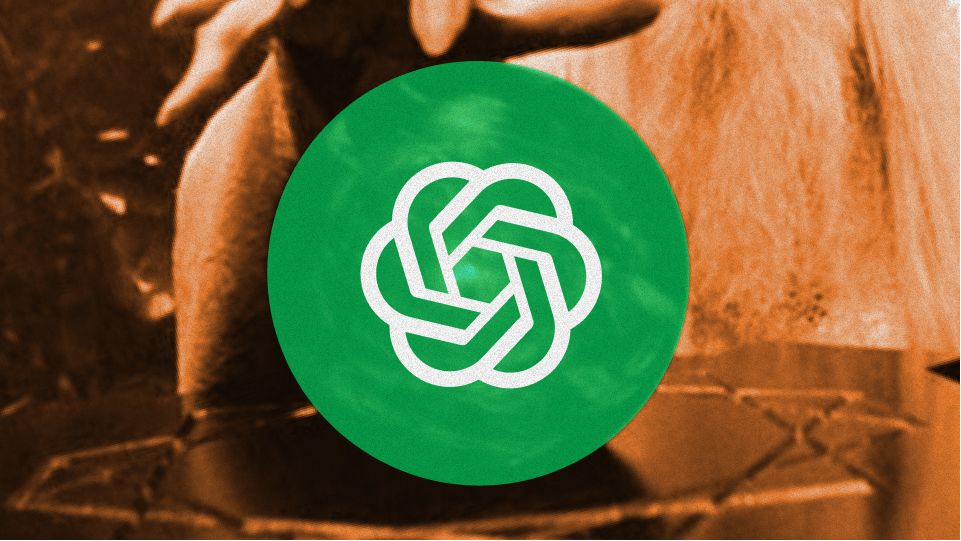ChatGPT: A Guide To Understanding Your Market Without Customer Contact
Learn where to find valuable customer data, what to extract, and how to quickly analyze it using review websites and Chat GPT. Don't waste time; get the insights you need to confidently start building and marketing your startup today.

What's the shortest path to customer insight?
The proper approach consists of these steps:
- Launching recruitment ads
- Constructing screener surveys
- Scheduling participants
- Constructing an interview script
- Interviewing participants
- Sending out $$$ incentives
- Transcribing conversations
- And finally, getting the insights.
As you can see, it can be time consuming and sometimes expensive.
It makes sense that startups often bypass all this and move straight to building. But by doing this, they end up making something nobody wants to use.
Without some research, predicting what people will adopt gets challenging. It's like robbing a superhero of their powers and condemning them to failure. Womp. Womp.
For the longest time this made me wonder: is it possible to quickly gather customer insights without conducting interviews or running surveys?
A process that wouldn't take up weeks to execute?
A process that can still help me to confidently start building and marketing?
A process that's free? 👀
Good news, it can be done! Today I'm going to tell you how.
I'll be going over:
- Where to find valuable customer data,
- What to extract and how to know what to extract,
- Finally, I'll tell you how to rapidly synthesize it to gain insights with ChatGPT.
Ready to learn how to shorten the time to understand your market? Onward, builders!
Where to find customer data and extract it
I'm going to focus on SaaS businesses where there are customer reviews on the internet. You can use this approach with any business that has reviews.
Finding your direct competitors
Let's imagine that I am creating a new startup. I want to help researchers streamline the distribution of incentives for their participants.
You could ask ChatGPT to list out competitors by including the keywords related to your product like this:

But ChatGPT can be unreliable as it sometimes provides outdated information. Some of the websites listed either aren't real or don't exist anymore.
A better way might be to use trusty ol' Google and do a keyword search to find products that are similar to yours.
Utilise review websites as a data source
Compile a list of competitors and start searching them on review websites such as G2, Capterra or Trustpilot.
I prefer G2 and Capterra. They ask specific questions, like "What issues is this product addressing, and how is it benefiting you?"
These questions are important to understand what pushed customers to choose the product in the first place. Important data for our analysis!
Choosing what reviews to extract
I found a product which is offering a similar service.
A good review to analyse would look like this because of the juicy details:

Now, we need to extract reviews depending on what we want to learn.
In my scenario, I want these questions to be answered:
- What situation were these people in to use the product (their pain points)?
- What were their expectations and their desired outcomes?
- What did they like about the product (attributes that made it possible to resolve their JTBD effectively)?
- What did they dislike about the product (attributes that may have caused anxiety in particular situations. This can be our opportunity to innovate)?
The next step is simple and the only one that takes a bit of time. Read reviews and sort them into specific question categories.
Hot tips for extracting reviews
- You don't need to copy-paste the full body of text, snippets will do fine.
- Crispy reviews with detail are better than vague ones. To avoid vague reviews, look for those that explain what words like "easy" or "simple" mean to them. They are relative terms, so look for ones that specify "easier than what" or "simpler than what".
- Track how often a comment is made by recording who said it. I use identifiers such as U1, U2, U3 and so on.
- Note their role, so you can use it to see which business roles find the value provided most useful.
- Collect as many reviews as you can, but stop collecting when you see repeated comments.
- No fancy tools are necessary. I use Apple Notes.
When you're done, your notes should look something like this:

How to analyse and synthesize insights
Now that we have some organised data, we need to analyse it to make use of it. Before, this was difficult to do because of how much time it took.
But with the rise of ChatGPT (a large language model or LLM) it's no longer the case. Thank you, Open AI.
With it, you can start generating insights immediately.
Check out my other article on how I used it to save time doing thematic analysis and ideation:
At the moment, ChatGPT limits the number of inputs you can give it. So you have to break down your queries into smaller chunks of data.
The good thing is that we've done the legwork to put reviews into specific question buckets.
Now, we have to give it the right prompts.
Synthesizing user challenges
Let's first understand what caused them to choose this product in the first place.
It's helpful to remember, without struggling moment(s), there's no demand for a product.
With the help of public reviews and ChatGPT, we can get a better understanding of what customer demand actually is:
[Paste reviews for the first question bucket]

Synthesizing desired outcomes
If you think a person struggling to cross a body of water, getting to the other side is their desired outcome. The vessel which helps them to get to the other side is the solution.
Identifying their desired outcome can help you to differentiate your own products or services and to position them in a way that appeals to these customers.
You can use these insights in your messaging to build up use cases, features and benefits sections or to run top of the funnel awareness campaigns. The possibilities are limitless!
[Paste reviews from the second question bucket]

Synthesizing positive product attributes
Understanding the positive attributes of these products can give us insight into what features and benefits are most valued by customers in our market.
By identifying these attributes, we can use the information to improve our own product and make sure they better meet the needs of our customers.
[Paste reviews from the third question bucket]

Synthesizing negative product attributes
Finally, we'll synthesize what they didn't like about the product.
The beauty of any product is that it isn't perfect. Where one service falls short another might shine. No company can have a dynamic UX to meet all of their customers' needs and that's a good thing.
This means that a segment of customers that are underserved within a product could be our opportunity to differentiate and be innovative.
Here's how you can identify those attributes:
[Paste reviews from the fourth question bucket]

Building a snapshot of value
Given ChatGPT's ability to remember conversation history, you can use it to build an overview using the value proposition canvas.
The canvas is visual tool that helps communicate and understand a business's customers and the value they offer in a clear and visual way:

The pain points section above is incorrect. It's finding problems with the product and not the challenges that customers face. A new chat without including those sets of reviews will resolve this issue.
However, the above generation is still gives a very good overview of the business. It encapsulates everything we need to know about the business and its customers.
Furthermore, you can start asking it interesting questions. For example, you can ask it:
- What lateral audiences might find the value delivered to this audience useful?
- How can our business differentiate and delight these customers?
- What would it take for these customers to switch to our product?
- What products or processes did these customers switch from? Can you provide some customer quotes?
Add those questions in to ChatGPT and observe what you can learn about this market!
Summing up
Here's a run down what you have to do:
- Use ChatGPT or Google to create a list of competitors.
- Pick one competitor who has reviews on Capterra/G2.
- Generate a set of questions that you want answered.
- Pull out reviews and add them to your question bucket.
- Start synthesizing those insights.
- Repeat with another business.
By following this process, you'll build up a deep understanding of what your future customers care about and how to position yourself against other players.
The only real limitation (for now) is that it has a limit on the number of reviews that you can give it. Thus limiting the output.
But as the results show it's still a faster starting point compared to the proper approach and better than being stuck in the guessing and failing cycle.
Want to try this out for yourself? Here's my training data.
Happy researching!

